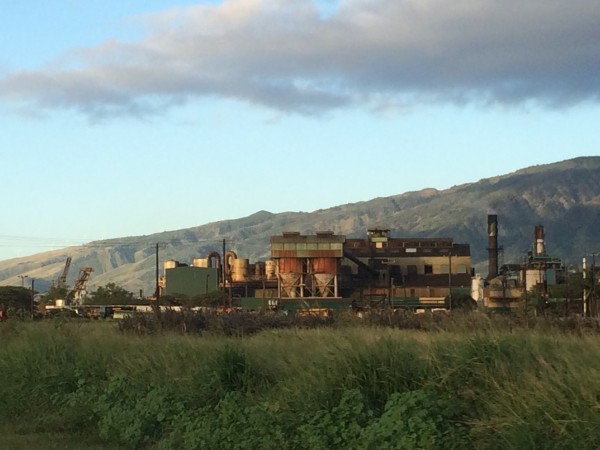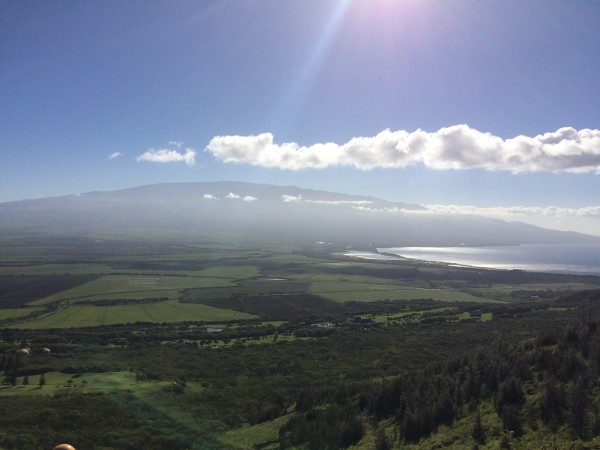The Great Maui Dust Bowl is on the Way – Maui Property Values to Fall?
Today, Hawaii Commercial and Sugar announced the end of sugar cane production by the end of the year 2016. According to the Maui News, sugar losses in 2015 could top $30,000,000.
What is Going to Happen?
When Wailuku Sugar shut down in the 1980’s and moved in to macadamia nuts, Wailuku was a vibrant sugar town with its own mill, and all of the area surrounding Wailuku was mostly in sugar. Now it is a mix of residential neighborhoods, commercial areas, the last large scale agricultural subdivision prior to the 1999 zoning change ending large lot, 2 acre agricultural subdivisions, and abandoned macadamia nut farms that proved not to be viable after a very expensive experiment by C. Brewer/Wailuku Agribusiness, the successor to Wailuku Sugar. There are very few productive farms in the entire area that used to be in sugar.
When Pioneer Mill in Lahaina shut down in 1999, the nature of Lahaina totally changed both for good and bad. No longer did the periodic harvesting, burn and planting cycle take place, but a lot of people were displaced from their jobs and had to either move or find other work. Over time and economic cycles most were adsorbed in to the visitor industry in some form, or found jobs working on the gentleman estates that have succeeded sugar from Launiopoko to Puamana.
For many years however, after sugar left, the hillsides were just left fallow and the subsequent periodic fires have created regular havoc on the west side. The only area that is immune to the fires is the Kaanapali Coffee Farms, which were planted and maintained and now represent a true model for maintaining property in agriculture combined with residences.
What can Alexander and Baldwin do with all of this land? Simply stated, most of it has to stay in agriculture because in June 2009 A & B dedicated 27,294 acres to be re-classfied to a new state classification called “Important Agricultural Lands,” in exchange for continuing low tax rates and the ability to develop some other properties not as valuable for agriculture. In other words, forget residential housing, commercial, and condos on this acreage for the foreseeable future.

This is the last surviving Sugar Mill on Maui

What About the Rest of It?
A & B is the master of entitlements for Maui and will be for years to come. They control the land and they control the water via their subsidiary, East Maui Irrigation. All of the new development around the airport was planned and entitled in the 1990’s for commercial purposes by the State Land Use Commission. A & B is moving forward with new projects in Wailea, a large housing project at the entry to Kihei, a proposed large residential subdivision in Haliimaile, and probably a lot more…
What this means is that for A & B to stay in business it is going to have to build a lot of homes, fast. This is great news for a product-starved Maui housing market. Affordable rentals are nonexistent. The median home price on Maui is over $500,000 and there are bidding wars on 80-year-old plantation homes, complete with termites, being offered for $400,000.
What About the Farming Part of the Deal for the 27,294 Acres?
A & B will probably develop large lot agricultural plots under lease terms and make them available to local farmers very quickly. Even with Maui County doubling the Kula Agricultural Park, there is huge demand by aspiring local farmers and ranchers for plots with water to farm them. Since County government typically moves very slowly, A & B can get the jump on the county and probably will do so. It is more likely that A & B will get out of farming entirely or they would have diversified already, which they have not. They will do what they do very well, get in to the landlord business and out of farming.
What About Property Values in Kihei and Wailea?
It is going to be a big mess for quite a while. If people think cane burning is a menace, imagine the summer dust storms that are going to happen after the last harvests, the irrigation stops, and there is no vegetation to hold the soil. My prediction is that it is going to look like the 1930’s during the great Depression for a while. Until a cover crop is established that can survive without irrigation, Central Maui, Kihei, Maalaea, and Wailea are going to be very dusty. After that, when vegetation grows back, look out for huge wildfires, unless a crop like coffee is cultivated.

Travis Thompson
January 9, 2016
Stacy is, as usual, right on the mark. There have been immense dust storms even between crops. The abandonment of sugar is potentially a major quality of life issue for the south side; and certainly not a plus for tourism.
Travis Thompson
January 9, 2016
Stacy is, as usual, right on the mark. There have been immense dust storms even between crops. The abandonment of sugar is potentially a major quality of life issue for the south side; and certainly not a plus for tourism.
Tracy Stice, R(B) ABR, CRS, GRI, Green
January 11, 2016
Travis, thanks for your comment.
HC&S could do some mitigation as they go out the door by just plowing the fields one more time and installing irrigation and turing it on for a while to get the old cane growing and to get the Kiawe seeds and Haole Koa seeds to germinate and start up. Of course nobody will pay them to do this.
Tracy Stice, R(B) ABR, CRS, GRI, Green
January 11, 2016
Travis, thanks for your comment.
HC&S could do some mitigation as they go out the door by just plowing the fields one more time and installing irrigation and turing it on for a while to get the old cane growing and to get the Kiawe seeds and Haole Koa seeds to germinate and start up. Of course nobody will pay them to do this.
Tim Stice
January 21, 2016
Many people have asked me “What do you think will happen now?” Truth be told, I have no idea. I too would love to see more “work force housing”, many people that work here cannot afford a home to call their own.
Regarding the remaining agricultural land, I envision local organic farmers taking on small portions of land to diversify what crops we can produce here on Maui.
Great article Tracy, I am excited to see what possibilities this will bring for us.
Tracy Stice
January 22, 2016
Tim, the biggest problem with ” organic ” farming is that it takes a minimum of 3 years to gain ” organic ” certification for a parcel and the agricultural practices on the property . It is hard for me to envision any scale of farming that would compel a farmer to work on the land for 3 years, pour money in the the soil, and not get a return , except as a commercial product. There is a ton of fraud in the ” organic ” farming business, with most people not really realizing what it takes to actually follow the rules. Turing land that has been in a mono-crop for over 100 years to an organic farm, would almost be like starting to farm on the moon. The soil is so shot, poisoned, and lacking in nutrients of all kinds that it is a huge challenge to do much more than raise goats on the property.
Tim Stice
January 21, 2016
Many people have asked me “What do you think will happen now?” Truth be told, I have no idea. I too would love to see more “work force housing”, many people that work here cannot afford a home to call their own.
Regarding the remaining agricultural land, I envision local organic farmers taking on small portions of land to diversify what crops we can produce here on Maui.
Great article Tracy, I am excited to see what possibilities this will bring for us.
Tracy Stice
January 22, 2016
Tim, the biggest problem with ” organic ” farming is that it takes a minimum of 3 years to gain ” organic ” certification for a parcel and the agricultural practices on the property . It is hard for me to envision any scale of farming that would compel a farmer to work on the land for 3 years, pour money in the the soil, and not get a return , except as a commercial product. There is a ton of fraud in the ” organic ” farming business, with most people not really realizing what it takes to actually follow the rules. Turing land that has been in a mono-crop for over 100 years to an organic farm, would almost be like starting to farm on the moon. The soil is so shot, poisoned, and lacking in nutrients of all kinds that it is a huge challenge to do much more than raise goats on the property.
[email protected]
December 19, 2017
The last year speaks for itself. 2017 has shown higher real estate prices, more tourists, few
marked worse conditions. Of course, if HC&S’ successor corporation drags its feet, those
worse conditions. Drought could occur while the diversified ag successor does little or nothing.
Yet for now, the “dust bowl” the writer envisioned just isn’t upon us.
2017 has yet to show much progress. But with the help of Maui County, 2018 could be the start of something far from a dust bowl.
Here’s to Maui County, what Council head Mike White plus others have led us to enjoy, and 2018.
Wailuku Observer
Tracy Stice
December 19, 2017
Eaglaw2 and I agree that Maui got off easily this year. A and B changed their status this year to a Real Estate Investment Trust ( REIT) presumably for tax reasons and favorable tax treatment for REIT’s in Hawaii. Even though there has been considerable legislative effort to start taxing REITs in Hawaii, the proposed bills have gotten little traction.
With that being said, I still feel that Maui is poised for a smaller version of what is happening now in California. There are not yet enough Axis deer to eat all of the biomass growing on the old cane fields. The cattle operation looks like it is taking off and that is great news, but how many cattle is it going to take to eat 27,000 acres of dedicated agricultural land with questionable water availability ?
With no question, we will see a lot more deer, pigs, and coqui frogs start moving across central Maui as there is nothing to stop them. I already have all three at my farm in Maliko Bay and perhaps that is good news and bad news. I don’t eat frogs , but I am a dedicated carnivore and I love deer and will eat wild pigs.